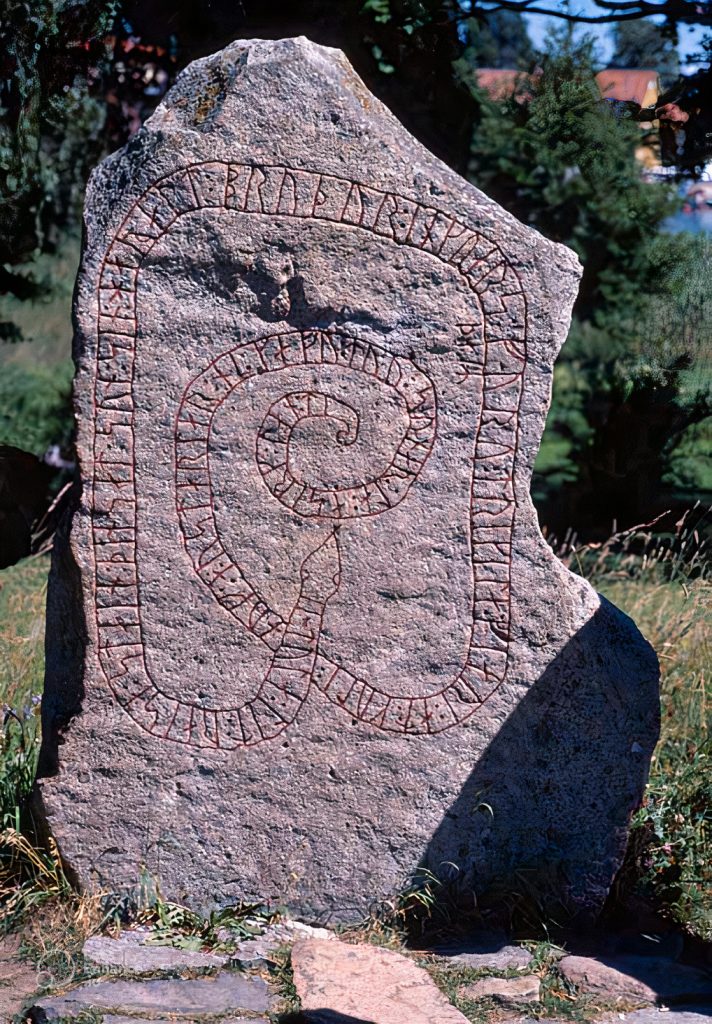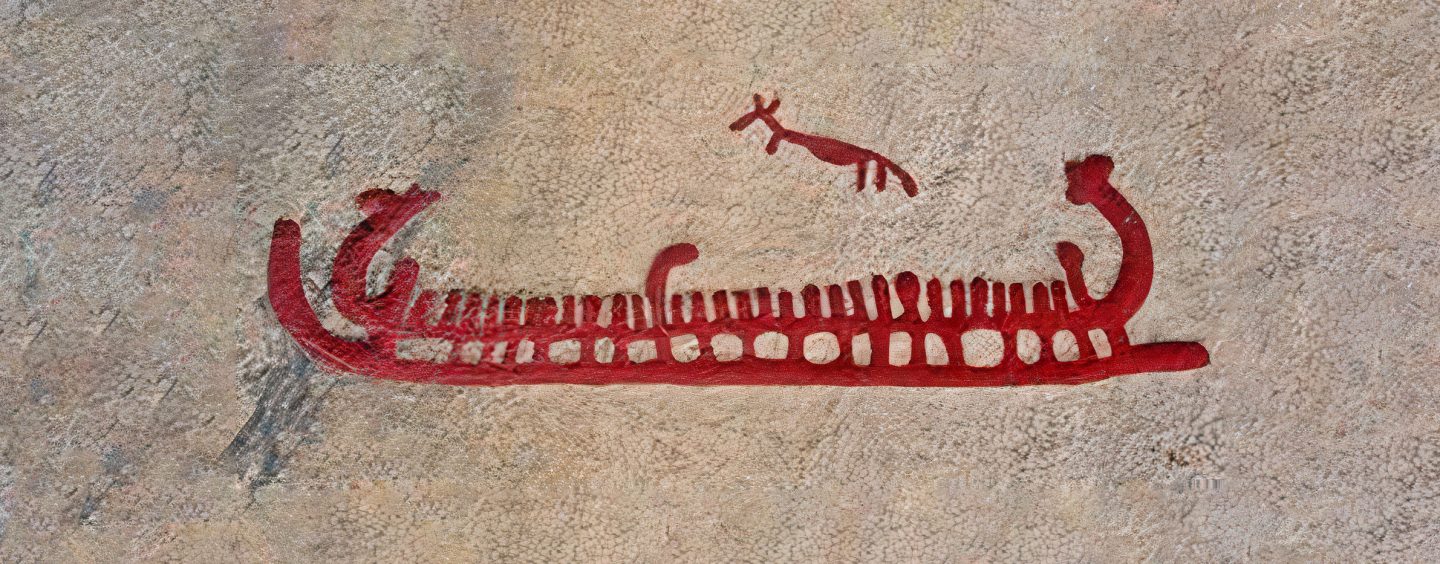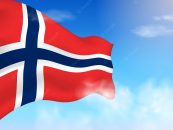By Dr. Carsten Sander Christensen
In 1999, a book appeared on the book market: “Ingen grenser” (No Borders). The author was the world famous Norwegian explorer and archeologist Thor Heyerdahl. Thor Heyerdahl died in 2002 a last visited Azerbaijan two years earlier. Theory of the book was a connection between Scandinavia and the south-western part of the Caspian Sea, nowadays Azerbaijan. Thor Heyerdahl’s points was that the Norse god Odin was actually a figure that originated from the Transcaucasia area and that Scandinavians were descendants of the people who once lived in the Azerbaijan area, about 15-20.000 years ago. In the following we will take a closer look at this theory, although researchers sigh wearily at the Norwegians hypothesis. Amongst them the well-known Azerbaijani archaeologist, Jeyhun Eminli, who characterized Thor Heyerdahl as a great traveler more than a clever scientist. (1)
Connections from the Neolithic time
70 kilometers southwest of Baku, you will find Qobustan Rock Art Cultural Landscape (UNESCO world heritage site since 2007). With an outstanding collection of more than 6,000 rock engravings bearing testimony to 40,000 years of rock art, the landscape is not only a living history book for Azerbaijan but also unique in the whole world. The history is mostly written in petroglyphs that are rock carvings. Among those petroglyphs you will find carvings very similar to the special Nordic petroglyphs called the Helleristninger. Some of the carvings in Qobustan are ships and warriors with weapons and the ships are very similar to the Vikings longships – longships that were longer than 35-40 meters with their characteristic bow and stern. Exactly the same.
These carvings are made in the Neolithic time about 15,000 years ago and not in the Viking age goes the argument. What we know, however, is that at that time Scandinavia and most of northern Europe were practically deserted because of the last Ice Age. We also know that migrations were a very normal phenomenon, and that the Transcaucasia region was a corridor for migrations. Furthermore, the Udi People in Azerbaijan and Georgia are tall, blond, blue eyes and can be very Nordic alike. But then there is a dark horse in the Transcaucasia region: the Basques. According to several researchers, the Basque people could originate from the region. Georgia was called Iberia for several centuries, just like the peninsula that contains Spain and Portugal. And the Basques, yes, they are very Nordic in type. And last but not least the distance between Azerbaijan and Denmark is only 3,500 kms. Migrations from Transcaucasia to the northern European areas are not at all unthinkable. A tribe that knew the art of rock carvings.

The Vikings
Thor Heyerdahl’s main argument was his theory about Odin, the top Norse god and mythic ancestor of the Vikings. In a 900-year-old Icelandic saga, it is mentioned that the mythological figure Odin migrated to Scandinavia from an eastern land called Asgård or Asers house. The word Azeri is very similar, but there is no evidence that it is the same word. However, the word existed in the Viking Age. The word Azeri means Turkic people and it originates from what now are Iranian Azerbaijan, i.e. Persia.
In recent times, theories have emerged that Odin could be Genghis Khan or another warrior chieftain of an almost mythical nature. According to the Danish historian Saxo Grammaticus (1160-1209), Odin and the other gods (asers) originally came from Byzantium (Istanbul), which was then the seat of the gods (Asgård). However, they had been sent into exile and stripped of all honours from the Latin gods when Odin had mocked the king of the gods. The closest idea, however, is of course that Odin represents either Jesus or the prophet Muhammad and then adapted to the Nordic conditions and way of life.
But in general, visited the Vikings Azerbaijan at all? In the tiny hamlet of Kis, near the Russian border, you will find graves with skeletons around two meters tall. This adds credence to the presence of proto-Scandinavians and Viking mystique. Jeyhun Eminli has stated in several places that there is no real evidence of an Azerbaijani-Viking ancestry. DNA study linking the two people is controversial is his argument. However, this is a truth with modifications, because recently the Danish DNA researcher Eske Willerslev has detected genes from Viking skeletons from many areas in Europe. The skeletons in Kis have, however, no evidence.
The Proofs
The Viking Age represents the period from the 700s until 1060s, but at the same time the Islamic culture was at it its absolute zenith of civilization. The Caliphates of Baghdad and Cordoba were the centers of innovation, architecture, science, literature, art and new ways of living in the world. A melting pot of all kind of peoples. And here we find the missing link and the proof that the Vikings were at the Caspian shore – also in nowadays Azerbaijan. The codeword is lacking personal hygiene. Of the Vikings is understood. In the 900s, the Arabs, Persians and Turks often showered, brushed teeth, often changed clothes, got haircuts and used cologne. As well as their toilet habits were almost like today.
Some of the greatest advances in the Islamic culture were the mapping of unknown areas of the globe and trade relations with new and unknown peoples and there was a real writing when the explorers met new cultures. Persian geographers were as far away as in the Murmansk area and some Arab geographers reached to the areas of nowadays Denmark. the two most well-known Viking settlements were the Danish city of Hedeby and Birka in nowadays Sweden. And now comes the meaning of the above-mentioned description of toilet habits.
In all descriptions of the Arab, Persian and Turkic scholars, they mentioned the abovementioned people named Ar-Rus (peoples from Rus area around Kyiv), i.e. also the Vikings, as smelling of urine, filthy and dirty hair, clothes not changed in weeks and the smell of the Vikings was so penetrating that you were never doubt when you met a Viking. And the toilet habits of the Vikings were very unhygienic. The descriptions we find from the Danish Hedeby, the Persians and Arabs scholar near the Caspian Sea, in Mediterranean Sea, in Persia, in Russia, and in the Serkland, Viking name for the Caliphate of Baghdad area.

The Caspian Sea raids of the Vikings and Rus people
Today’s researchers are very much centered around the Black Sea and Vikings, but they have gone a bit wrong there. Highways of the Vikings were rivers and not smaller lakes like the Black Sea. The rivers Don and Volga was typical transportation rivers of the Vikings. In 913 the first raid of the Norsemen and the people of the Rus took place a fleet of mostly merchant 500 ships reached the shores of the Caspian Sea, also shores of Persia. In this raid, Baku and the regions of Tabaristan, Arran, Beylagan and Shirvan were plundered in a three days raid, and everywhere they looted as much as they could, taking women and children as slaves. A raid thirty years later was gentler with Azerbaijan.
At that time in the 10th century, Azerbaijan was part of the Khazar Khaganate, ruled by the Turkic nomadic people the Khazars. However, in 965, near nowadays Rostov on Don, the Khazar fortress stronghold at Sarkel was completely destroyed and the river system Don-Volga was free. The Azeri people in Azerbaijan was from now on frequently under Persian rulers. In the period 980 until 1050, The Caspian Sea shores were raided several times. In 1030, the city of Ganja and the region of Shirvan were plundered, but the Vikings were defeated in 1031 near Baku.
60 kms west of Stockholm, you find Gripsholm Castle, and on the area of the castle, you will find the Gripsholm Runestone. The Runestone commemorates Vikings who died in the expedition of the chieftain Ingvar the Far-travelled in 1041 and 1042. In 1042 Ingvar led an unsuccessful large Viking attack against Persia with a fleet of 200 ships (around 18,000 men). The inscription says that it is raised in memory of Harald, the brother of Ingvar the Far-Travelled. Harald is believed to have died in the Transcaucasia region, nowadays Georgia and Azerbaijan. The Gripsholm Runestone is the last evidence of Vikings in the Transcaucasia area.
Vikings visited the area of Baku and its hinterland. However, Thor Heyerdahl’s theory that Azerbaijan may in fact be the cradle of the Nordic Vikings, at first glance looks somewhat controversial. According to Jeyhun Eminli this heritage has become tangled up somehow with questions of national pride in Azerbaijan. (1) But at a second glance, the theory about migrations in the Neolithic era is maybe not so unthinkable at all, and then in a way it is the cradle.
——————————–
(1) “Did Vikings Really Hail from the Craggy Caucasus?” by Paul Salopek (30.12 2015) in aznews.az






